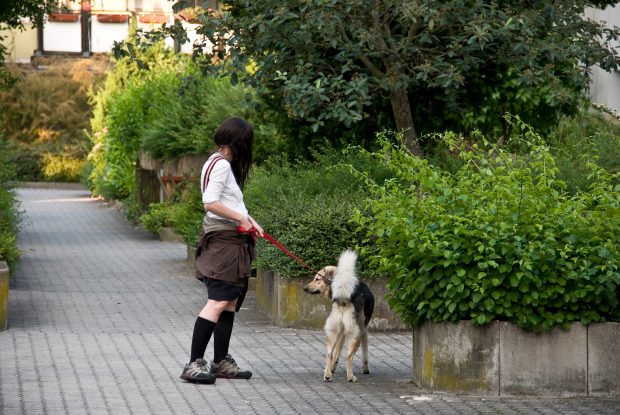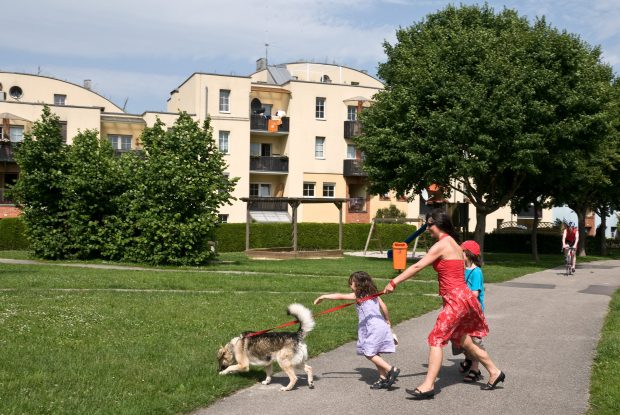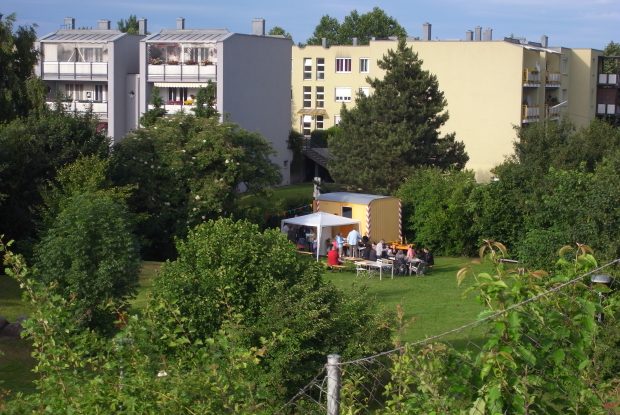Photography: Felix Sauter
Artists: Susanne Kudielka and Kaspar Wimberley
A project commissioned by the Festival der Regionen, taking place between the 9th of May and the 1st of June 2009 in Auwiesen (Linz, Austria)
‘Gassi’ offered festival visitors the chance to borrow a local dog and let this dog guide them on a walk through Auwiesen. This simple act, for many people a daily routine, offered the potential for a unique interaction with the site.
Walking with a dog created a feeling of belonging and purpose, legitimising intrusions and facilitating interaction with the dog-walking community; A form of camouflage for cultural tourists. The lack of any conscious destination and the consideration for the dog’s needs resulted in a very different rhythm and focus for the walk, neutralising or diverting the voyeurism of the situation, removing the exotic, the spectacle, the ‘them and us’. Curators would return and talk about wee-wee.
Who or what was in control of the walk? How does the architecture guide the dog-walkers? How do the dogs guide the dog-walkers? Do patterns of daily life and daily routine emerge? The routes that were taken were documented using GPS tracking devices and short interviews that were held at the end of each tour, a growing archive of cartographic and cognitive documentation that emerged as the festival progressed. At the end of the festival we hosted a BBQ-Vernisage that brought together the dog owners, Gassi participants, and an exhibition of routes, reactions and experiences. A publication was then made to document the project.
Background
Walking a dog leads to unavoidable contact with other dog owners. The dogs tend to force the conversation, as they excitedly perform a parallel get-together and bring the walk to a temporary halt. The starting point for the conversation is almost always the dog. How old, male or female? You find yourself talking openly about a very personal and private thing.
Auwiesen is a place of dogs and dog owners, complete with ‘Freilauf’ areas and the provision of plastic bag dispensers along the main road. During an hour-long walk through Auwiesen, we documented twelve encounters with dog owners who were taking their four legged friends for a walk. The people we met spanned every generation and came from a variety of backgrounds, a cross section of the Auwiesen community. You usually found yourself saying hello to the dog first. If we had not said hello to their dogs, we would probably not have had a discussion with the people we met.
The idea also touches on our own actions, as artists coming into a community to explore its potential for a future project. Sniffing around in a state of heightened interest, we found the place fascinating, taking photos of people’s private spaces, and looking for conversations or contact with ‘the locals’. This led us to consider the cultural tourists that might be coming to ‘experience’ Auwiesen during the festival. Providing visitors with a dog could be read as a form of camouflage for cultural tourists.





